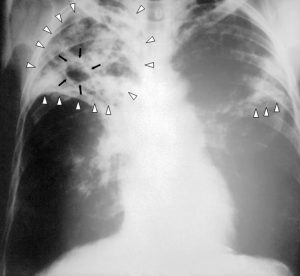TB Modelling
Tuberculosis (TB) is a widespread infectious disease caused by various strains of the mycobacteria. It is normally fatal in cases where it is left untreated, and as such is a major problem in the developing world where medical help is scarce and immune systems are weakened by lack of food and water.

TB normally affects the lungs but can affect other parts of the body, and is typically spread through the air by people with an active TB infection when their respiratory fluids get airborne. Only about 1 in 10 infected with the bacteria progress to the active stage of TB however, with the rest remaining in the latent phase. Ever though it is not a prevalent problem in developed countries, according to the WHO TB is the second greatest killer in the world behind HIV/AIDS, and so there is a lot of research into treatment of the condition.
In HIG we are using advanced CS techniques and technologies to aid and improve the analysis of data from large-scale international clinical trials of TB treatment regimes. The aims are (I) to derive important insights from existing data, and (II) to provide evidence that helps choose options for future trials.
Recent Publications
Pitcher, MJ, Bowness, R, Dobson, SA & Gillespie, SH 2018, ‘A spatially heterogeneous network-based metapopulation software model applied to the simulation of a pulmonary tuberculosis infection‘, Applied Network Science, vol. 3, 33. https://doi.org/10.1007/s41109-018-0091-2